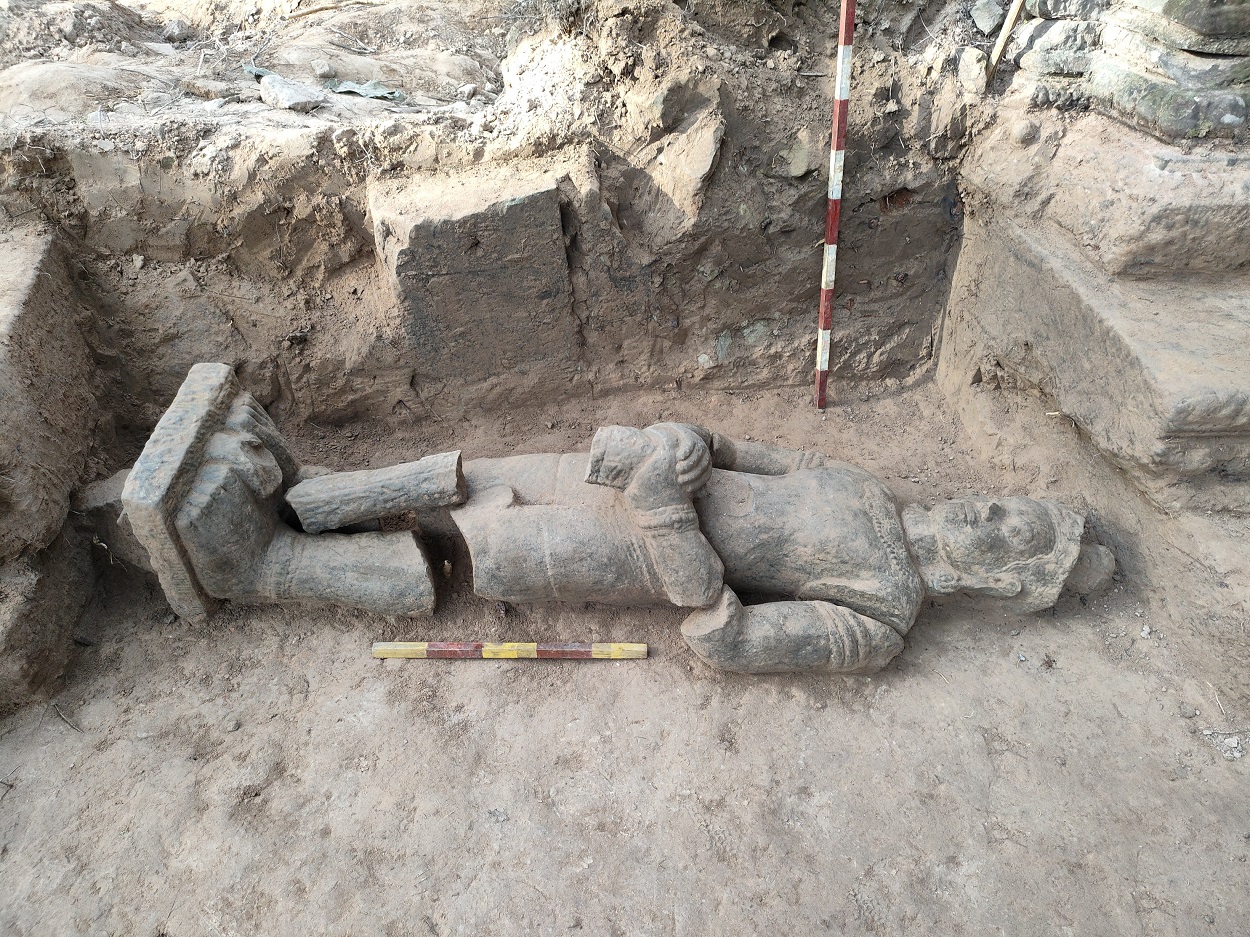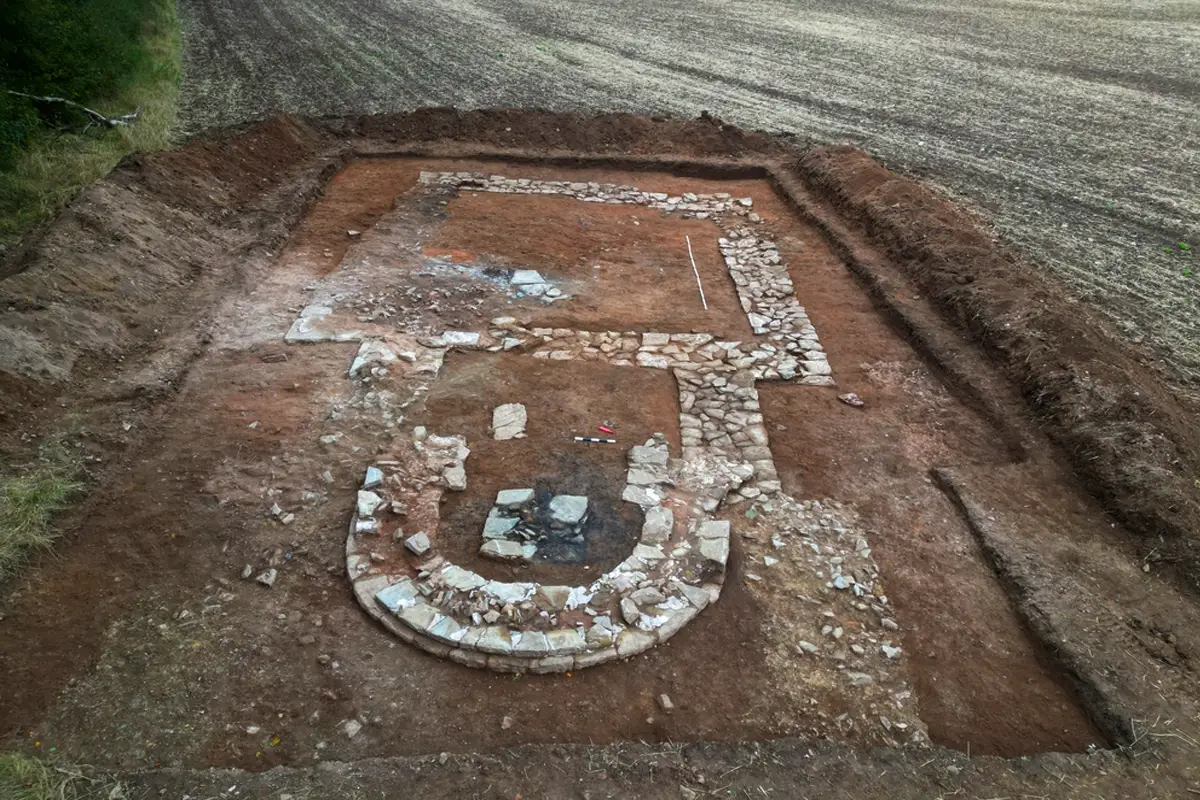Archaeology
Archaeologists study submerged Nabataean temple

In 2023, archaeologists discovered the submerged remains of a Nabataean temple during an underwater survey of the ancient port of Puteoli, located in modern-day Pozzuoli, Italy.
Puteoli was established in the mid-6th century BC as a Greek colony called Dicaearchia. After the Roman conquest of Campania following the First Samnite War, Dicaearchia was annexed into the Roman Republic, which later founded the colony of Puteoli.
Puteoli served as one of the primary trading hubs for Rome, emerging as the great emporium of foreign trade for the Alexandrian grain ships and goods from across the Roman world.
Due to the position of Puteoli in the Phlegraean Fields, an active volcanic region, volcanic bradyseismic activity has raised and lowered the geology on the peninsula, resulting in parts of Puteoli being submerged.
The results of a year-long study, published in the journal Antiquity, has mapped and reconstructed parts of the submerged temple, the only known temple located outside of Nabataea – an allied kingdom of Rome that controlled territory from the Euphrates to the Red Sea.
The Nabataean temple and the internal routes of the vicus Lartidianus (dotted lines) at the current stage of research – Image Credit : M. Silani
Using a photogrammetric survey, the researchers have identified that the temple had a rectangular plan and two rooms with access facing north, linked to the internal routes of the vicus Lartidianus (an area designated for foreign people engaged in trade).
Within one of the rooms (designated Room A) are two altars made of white Luni marble, and a mensa with eight rectangular recesses for housing aniconic betils. In the second room (designated Room B), the southern perimeter wall has a white marble slab covering, one of which shows the inscription Dusari sacrum, meaning “consecrated to Dushara”, the chief deity of the Nabataean pantheon.
According to the study authors: “The existence of a Nabataean sanctuary within the port area confirms that there was a community from that region participating in the commercial activities of Puteoli.”
“The integration of these individuals within the local community is evident in the building techniques and materials used in the construction of the temple, and for the choice of Latin for the inscriptions to their supreme god, the lord of the mountains and the germinating force of nature, Dushara.”
Header Image Credit : M.Steanile
Sources : Antiquity | https://doi.org/10.15184/aqy.2024.107
This content was originally published on www.heritagedaily.com – © 2023 – HeritageDaily
Archaeology
Guardian statue uncovered at Banteay Prey Nokor

Archaeologists from the APSARA National Authority have uncovered a guardian statue at the Banteay Prey Nokor temple complex in Kompong Cham, Cambodia.
Known locally as the temple of “Wat Nokor in Khum of Kompong Siem”, or “Wat Angkor”, Banteay Prey Nokor was constructed during the reign of Jayavarman VII (AD 1181–1218), the first king devoted to Buddhism in the Khmer Empire.
The complex covers an area of 37 acres and consists of a central tower surrounded by four laterite wall enclosures made from sandstone and laterite.
In addition to being the largest ancient temple complex in Kampong Cham Province, it has several distinguishing features. One of the most notable is its construction from black sandstone, which sets it apart from other temples of the period, typically built from brick or reddish sandstone.
Image Credit : Phouk Chea / Chea Sarith
Archaeologists from the Department of Preservation and Archaeology at the APSARA Authority recently excavated one of the gateways of Banteay Prey Nokor, clearing away layers of rubble from the collapsed upper structure.
Upon removing the rubble material, a guardian door statue was uncovered to the right of the eastern entrance to the gateway. The statue is broken into six pieces – breaking at the neck, the left forearm, the waist, and below the knees of both legs.
According to the researchers, the statue, which originally stood at a height of around 1.6 metres, is of the Bayon style, in reference to the Bayon state temple of Jayavarman VII at the centre of Jayavarman’s capital, Angkor Thom.
“The sandstone gate guardian will now be stored at the Preah Norodom Sihanouk-Angkor Museum,” Angkor Wat’s heritage police said in a statement. “It will be preserved and studied further.”
Header Image Credit : Phouk Chea / Chea Sarith
Sources : APSARA National Authority
This content was originally published on www.heritagedaily.com – © 2023 – HeritageDaily
Archaeology
Sacred chapel destroyed during German Peasants’ War rediscovered

Archaeologists from the State Office for Monument Preservation and Archaeology (LDA) of Saxony-Anhalt have rediscovered the Mallerbach Chapel at the site of the Kaltenborn monastery.
Between 1524 to 1525, a large number of peasants, urban lower classes, and lesser nobles living in the German-speaking areas in Central Europe rebelled against a combination of economic, social, and religious factors. These include:
Economic hardship and inequality: Peasants faced heavy burdens from taxes, dues, and rents imposed by landlords, the church, and secular rulers.
Feudal oppression: Many peasants grew increasingly resentful of the limitations placed on their freedoms by feudal lords, including restrictions on hunting, fishing, and access to communal lands.
Religious influence: The Reformation inspired many peasants who saw in it a call for social and economic reform against a corrupt church.
Legal grievances: Peasants sought greater control over local governance and justice. They were frustrated by the arbitrary decisions made by their lords and demanded more influence over the laws and rules that governed their daily lives.
Image Credit : LDA
Following the outbreak of the Peasants’ War, insurgents from the nearby villages of Riestedt and Emseloh plundered the Kaltenborn monastery near Allstedt in the German district of Mansfeld-Südharz, leading to the monastery’s decline and eventual dissolution in 1538.
According to a press statement by the LDA: “It’s destruction – an act of rebellion against the Cistercian convent of Naundorf, which was in charge of the Chapel of St. Mary and to which the Allstedt residents were subject to taxes – can be seen as the first flare-up and harbinger of the coming uprising of the ‘common man’ against the authorities.”
Recent excavations at the monastery site have located the 12th/13th century Mallerbach chapel, a sacred place of worship for pilgrims who came to witness a weeping image of the Virgin Mary.
Archaeologists have uncovered the original floor plan of the chapel, which measures around 17 metres in length with a rectangular choir and semicircular apse. Excavations have also found the altar foundations, as well as traces of burning from the time of the German Peasants’ War.
Header Image Credit : LDA
Sources : State Office for Monument Preservation and Archaeology (LDA)
This content was originally published on www.heritagedaily.com – © 2023 – HeritageDaily
-

 Ghosts2 years ago
Ghosts2 years agoZozo: The Ouija Board Demon
-

 Space2 years ago
Space2 years agoScientists claim to have found the answer what existed before the Universe
-

 General3 years ago
General3 years agoUC San Francisco engaging in horrifying experiments, organ harvesting of live babies in the name of “science”
-

 Ghosts2 years ago
Ghosts2 years agoOld Coot of Mount Greylock
-
Archaeology2 years ago
New discoveries at Ekʼ Balam during conservation works
